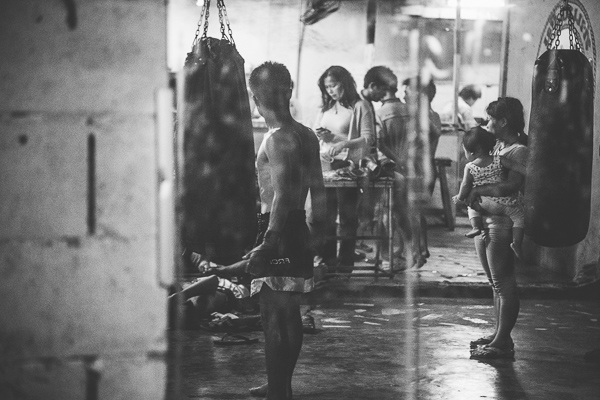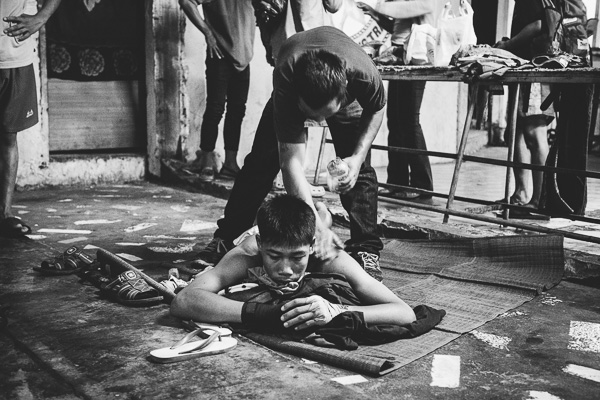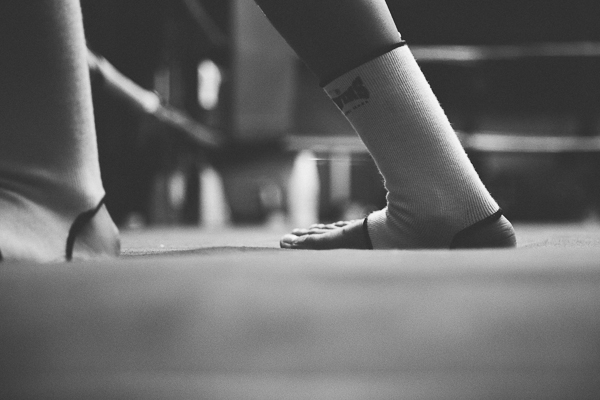The launch of Canon’s EOS R gave us a chance to talk to a group of the engineers involved in the project. The company put forward an engineer from each of the main parts of the development process: physical design, optical design, UI design and overall product design. They talked of being given more freedom than ever before but also of the need to build on the EOS system’s strengths.
 |
| Left to right: Koji Yoshida – Lead Engineer/Architect, Integrated Design Department 232 Manabu Kato – Deputy Senior General Manager, ICD Optical Product Development Center Shintaro Oshima – General Manager, ICB Product Development Div 1. Hironori Oishi – Lead Specialist, Product Design Div 1. |
A new, short and wide mount
Canon has been consistent across its launch, when it’s said that the important announcement isn’t the EOS R, specifically, or the fact that there’s no mirror, but in what the RF mount allows them to do.
Manabu Kato sums up the freedom they’ve gained in terms of optical design: “people who’ve been working on lenses for a really long time have, with this new system, been able to make lenses like the 28-70mm F2 comparably easily, compared to how they had so many challenges in the past.”
“By having [more] data being transferred between the camera and lens…you can improve the autofocus, metering and image stabilization performance”
As well as allowing more ambitious optical designs, the RF mount also adds data bandwidth, moving from eight communication channels to twelve. “During shooting there’s a massive amount of data going between the lens and the camera, so making sure that was smooth was another challenge,” says Kato. “By having that huge amount of data being transferred between the camera and lens, you can improve the general performance in relation to autofocus, metering and image stabilization. And you can also add features such as the control rings on the lenses.”
 |
| The RF 28-70mm F2 lens, combined with pupil detection AF is a powerful combination. ISO 100 | 1/5000sec | F2 | Canon RF 28-70mm F2 @ 70mm (Pre-Production lens) |
“You can also use DLO without any problems,” he said. Digital Lens Optimizer – Canon’s name for digital lens corrections – previously required that the camera look up the data in a database, meaning that camera firmware needed to be updated to accommodate new lenses. It’s now supplied in real time by the lens itself, so there’s no need for a look-up step.
Video, as well as stills
This real-time data flow allows the use of Digital Lens Optimizer and distortion correction in video for the first time. And it’s clear that, despite the EOS R’s comparatively modest specs in that area, Canon has done a lot of thinking about the needs of video shooters.
“Getting rid of [the mode dial] was a big decision that required a lot of consideration”
“In relation to the optical system, we gave consideration to focus breathing*, and also aperture control: you can change the aperture in 1/8th stops,” says Kato. “also the Nano USM, it’s very quiet and quick: the first time in an L lens.”
Difficult decisions
Trying to accommodate the needs of video shooters ended up leading the removal of the camera’s mode dial, says Koji Yoshida: “if you have a mode dial then the [exposure] settings will be the same for both stills and movies.”
 |
| The decision not to offer a mode dial on the EOS R was not taken lightly. |
“We consulted with a lot of different people and talked about this a lot, and decided to have different settings this time,” he says. But it’s clear this isn’t a decision made lightly: “[The mode dial] is a function that’s been common in the past, so getting rid of that was a big decision that required a lot of consideration,” said Shintaro Oshima. “There was a lot of internal discussion about this point,” concurs Yoshida.
The challenge of legacy
This tension between novelty and legacy is a constant theme of our conversation. “Our aim was to carry on the traditional parts of EOS but then bring in new innovation at the same time,” says Hironori Oishi: “our biggest challenge was making this look like an EOS camera with just a single glance, you can see that it’s an EOS camera, based on the traditional styling of the EOS cameras. And also the feeling, when you hold the camera – as soon as you hold it in your hand, you know it’s an EOS.”
 |
| The M-Fn button is one of the most obvious ways in which the EOS R introduces new thinking to the EOS experience. It’s fair to say we’re not convinced by the way it currently works. |
This extended to the user interface, says Yoshida: “the challenge we faced in terms of the software or the interface was making sure that it’s got the same basic controls as an EOS: to carry on that operability that EOS users are used to, then also implementing new elements into that design at the same time.”
The answer was to blend features from Canon’s existing live view and DSLR experience:, he says: “We used the mirrorless AF modes but we also also included features from the 5D Mark IV AF, like Expand AF area and large zone AF: this is the first time this has been introduced in a live view camera from Canon.”
Opportunity for innovation
The solution to these tensions seems to have been to look for opportunities to innovate while maintaining continuity: something made clear in the challenges of maintaining EF lens compatibility. Despite the EF mount already being fully electronic, Kato says: “it was difficult ensuring that compatibility. But we think that’s a big plus for the system.”
 |
| Whatever we might think of the rest of the EOS R experience, we love the idea of adding a control dial or filter mount in the EF-to-RF adapters. |
Tellingly, the team looked for ways to add new features. “We also achieved the control ring adapter which brings additional value to EOS lens users,” says Kato: “The same applies to the drop-in filter adapter: it gives added value to those who already have EF lenses. We wanted to make sure that we looked after our current users of our EF lens system.”
“The control ring adapter brings additional value to EOS lens users…the same applies to the drop-in filter adapter”
Oshima stresses that the need for continuity didn’t hold the new camera back, though: “another focus was the low light limit performance. That’s a point of evolution from the EOS cameras.”
“Another focus was the low light [autofocus] limit performance”
This eye for an opportunity to innovate is perhaps most clearly seen in the way the EOS R, unlike any other mirrorless camera, closes its mechanical shutter when shut down. “we wanted to protect the sensor as much as possible from dust and light hitting the sensor,” explains Oshima: “The light coming through the lens affects the sensor in the long term. The color filter array and microlenses and also the photodiodes can all be damaged by light [if the sensor is always exposed].”
 |
| Another bright idea: Canon’s engineers worked out that if you stop-down the lens aperture blades, it reduces the risk of damaging the shutter blades, at which point you can close them to keep light and dust off the sensor. |
To then protect the shutter blades, the camera stops its lens down and displays a warning not to leave it facing towards the sun, without a lens cap. “The aperture cannot be closed completely, so that message is kind of a safeguard,” explains Kato: “We’re kind of proud of the fact that with a simple idea, we’ve been able to increase value for customers.”
Just the beginning
As usual, no one was able to discuss future products. When asked whether there was any chance of an APS-C RF-mount camera, Oishi was suitably non-committal: “we’re thinking about it, but we can’t answer in detail,” he says. But the individual engineers did all discuss what they were looking forward to.
“We want to surprise and astonish you, so please expect big things”
“It gives more structural freedom in terms of design, because it doesn’t have a pentamirror”, says Oishi. “I’m excited about improvements in Digic image processor and functions that create more value and make easier to use,” says Yoshida. But it’s optics specialist Kato who seems most enthused: “This is just the start of the system,” he says, talking about F2.8 zooms and other possibilities, before settling on a broader-reaching point: “We want to surprise and astonish you, so please expect big things.”
Editor’s note: Richard Butler
Nearly ten years ago I wrote a blog post suggesting camera makers should go back and take a ‘blank sheet of paper’ approach to the way their cameras operate. Simply suggesting it is the easy bit. Actually doing it, and having to find clever solutions is quite a different matter.
Throughout our conversation, it was obvious that Canon had given its engineers more freedom than usual in this project but that there’s still a careful balancing act to avoid confusing or alienating your existing users. The nods of recognition around the table as Mr. Oshima spoke about the difficulty of decision to eliminate the mode dial said a lot about how seriously these decisions were taken.
It’s difficult to talk to people who’ve worked so hard to make a great camera and then have to publicly report that it doesn’t work as well as they’d intended. But that’s the reality of our experiences with the EOS R so far, across the DPReview team.
If nothing else, though, the team’s responses show how seriously Canon is taking the RF system as a chance to improve and innovate.I really hope we’ll see that reflected in updates to the EOS R and future products in the system.
* A change in field-of-view as the lens focuses – a minor concern for stills shooting, but potentially distracting in video [Return to text]
Articles: Digital Photography Review (dpreview.com)











You must be logged in to post a comment.